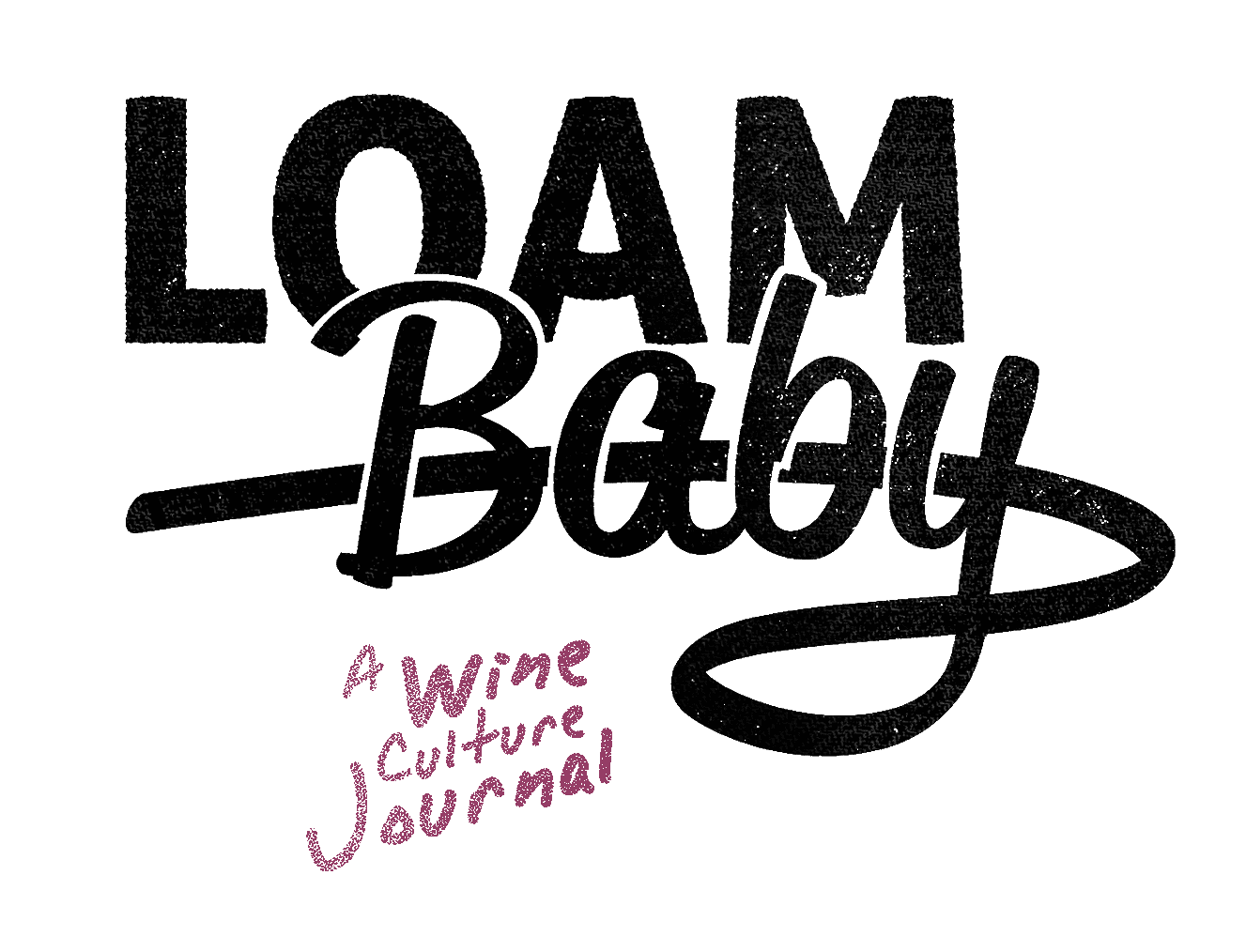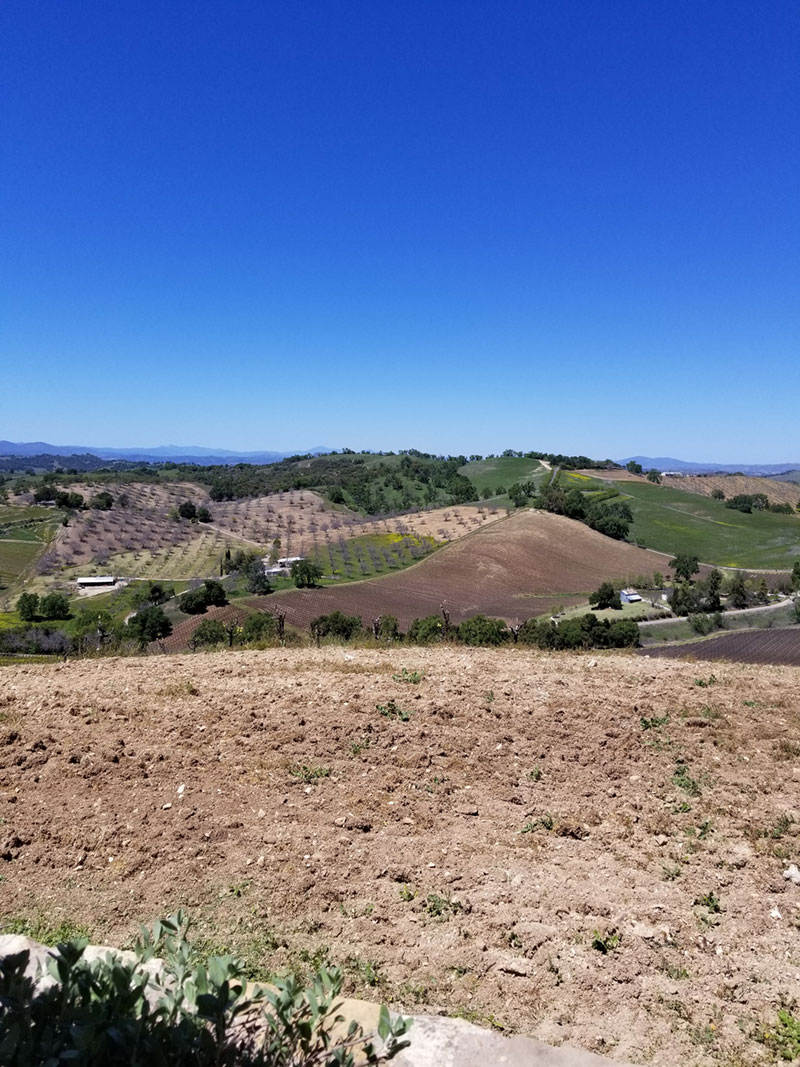One of my favorite road trips is along California’s Highway 1, especially the Northern end of the Golden State’s Central Coastline. Dramatic views of the Pacific set against the bright grandeur of Hearst Castle, resting atop the rolling hills of San Simeon, seem intended to lower one’s blood pressure. The Piedras Blancas elephant seal rookery nearby, which runs for about six miles, is a great place to stop and stretch one’s legs – a highly entertaining look-out, where visitors can observe these wonderful creatures in their natural habitat.
Just south of Piedras Blancas is the small seaside town of Cambria, a historic tourist destination. I used to stop here, mostly on my way to Santa Barbara or Los Angeles, for a notoriously great cup of Mexican hot chocolate at a café that, alas, no longer exists.
Recently, just outside Cambria and heading inland towards Paso Robles, I discovered a small gem of winery that lies within the San Luis Obispo appellation, which also includes Talley Vineyards in the south. Talley and Stolo are nearly 58 miles apart; over an hour’s drive from each other. The Stolo wines bear perhaps a greater similarity with the Santa Cruz Mountain appellation north of them.
When I arrive, I am greeted by Winemaker Nicole Bertotti Pope. Tall and possessed of an unadorned, natural beauty, she immediately comes across as warm and earnest. Dressed in a flannel shirt, jeans and work boots, Pope welcomes me into the Stolo tasting room, where she shows me pictures of Don and Charlene Stolo, who bought the property in 2002, and their Managing Partner Maria Stolo Bennetti. They are laid out among photos of kids and grandkids; some rest atop a large, stand-up antique radio. Since 2002, the Stolos have committed mightily to their project. In 2011 they broke ground on an estate winery, and in 2012 they hired on Pope as winemaker. By 2013 Pope was still transitioning away from her job at Talley into her new role at Stolo, finding herself commuting between two jobs, while raising a baby and toddler with her husband, Luke, who is a vineyard consultant. At the time, their growing family was living in a double-wide across the street from the Stolo estate.
“When I first started, we were doing things here we’d never done before, like purchasing equipment for a brand new winery. Everything was new,” Pope says. “In 2013 we were raising a little baby and a toddler, who was always running off in one direction or another. Looking back now, I wonder how I ever pulled that all off. Of course, the Talley family allowed me a flexible schedule. They’re super family-friendly. But it’s much easier now that the kids are a little older. Grandparents live in town. My dad is picking my kids up from school today. And family is very important to the Stolo family – they have kids and grandkids – so they will let me bring my kids to work if it’s necessary, and they just trust that I’ll still get my work done. It’s a great relationship to have.”
Though Pope acknowledges that harvest is still extremely challenging, with children still demanding much of her time, she credits a strong team as the reason her schedule is reasonably balanced between work and home life. “Now we know how everything works at the winery. I know how everything works. If I need help in the cellar, I can request an assistant. We have a flow now. There is trust among the team.”
Winemaking can be solitary work. Oftentimes during slower times of the year there may only be one person in a small-production cellar at any given time. “I don’t mind the solitude,” Pope says, explaining that at home she is often very busy engaging with the family, cooking, cleaning, etc. The solitude, which begins with her morning drive, offers a welcomed contrast. “When I’m driving to work, I listen to NPR and enjoy the weather, especially the clouds, which are different every day. And I value the time that I spend here in the cellar, because I’m never here for 10-long-hour days, except during harvest, so I have enough time for the wines and for my family.”
Pope kicks off our tasting with the 2017 Stolo Estate Sauvignon Blanc. I’m immediately drawn to its freshness, minerality, and a touch of lemongrass and thyme, all wrapped up nicely in an energetically structured body. It’s a Sauvignon Blanc with brightness and a backbone. When I ask Pope what her inspirations were when she began making Sauvignon off the Stolo Estate, she cites New Zealand Sauvignon Blancs, simply because they share a cooler climate. Though she enjoys Sauvignon Blancs from the Napa Valley, Paso Robles, and Happy Canyon in Santa Barbara County, she cites them all as warmer locations, and the Stolo Sauvignon Blanc seems destined to respond to its oceanic environment. From there, Pope says, “we’re cold-fermenting in stainless steel, with some neutral oak to round it out. There is no malolactic. The vines know they’re in a maritime climate. At first the grapes taste like nothing; they’re just green. Then suddenly, they becomes very floral; they taste like the juice from the press. You can tell right away that you’ve made the right pick.” At this level of quality and distinction, the Stolo Sauvignon Blanc over-delivers at $27.00 a bottle.
The 2017 Stolo Estate Gewurztraminer comprises various separate lots, some of which have received skin-contact. “I always prefer the skin-contact Gewurztraminer,” Pope says. ”It has more interesting aromatics, more interesting florals. I was afraid it might get bitter, because Gewurztraminer skins can be very bitter, but I never got that in our wine, so we’re going to do more and more of it.” At $25.00 a bottle, this is another serious, deeply-nuanced wine that over-performs at this price point.
[Please allow me to provide some context when I refer to these prices as fair: My wife and I love wine. Because we enjoy a glass or two of wine with dinner almost nightly, we tend to spend about $7.00 to $10.00 per bottle on our weekday wines. On the weekends, we spoil ourselves and spend more – anywhere from $28.00 a bottle, to $280.00 a bottle, or more, if we’re out to dinner.]
The 2016 Stolo Estate Pinot Noir at $42.00 (380 cases made) is an elegant revelation. The 50% stem inclusion in this wine seems to elevate the already bright aromatics of high-toned cherries, violets and a distant suggestion of salinity. It speaks to the terroir of the Stolo site. (If you haven’t yet visited Stolo or are unfamiliar with its terroir, you will enjoy its influence if you favor Pinot Noirs that are interpreted in a fresh, energetic style, with natural acidity in balance and enough structure to suggest age-worthiness.) With regard to sense-memory, this Pinot takes me right back to some of my favorite Santa Cruz Mountains producers, like Jeffery Patterson’s finest Pinot Noirs under his iconic Mt. Eden label. During our visit, Pope mentions that she’s very drawn to Santa Cruz Mountain Pinots, most particularly those of Thomas Fogarty and Big Basin.
It is however, the Stolo Syrahs that signal a defining moment for this producer. Stolo is a serious contender in the Rhône-variety category. The Stolo Syrahs can stand proudly beside an Arnot-Roberts Syrah (a personal favorite of mine) or other American Syrahs of that caliber. I was fortunate to try a deep vertical of Stolo Syrahs, some of which preceded Pope’s arrival on the estate. It is here that the site ultimately proves its merit, translating the very essence of Syrah through the prism of its own unique terroir. The Stolo Syrahs are iodine beauties, smelling at times like blood crushed from a rock in a spring meadow near the ocean. They are vibrant, sophisticated and rightly claim their place alongside the finest old- and new-world producers. The Estate Syrah retails for about $42.00 a bottle.
Stolo Vineyards & Winery is open to the public and is located off of picturesque Santa Rosa Creek Road, running east out of the coastal town of Cambria, California. It’s just a few miles as the crow flies from the nearby Pacific Ocean, which is viewable from atop the estate vineyard.
R.H. Drexel





